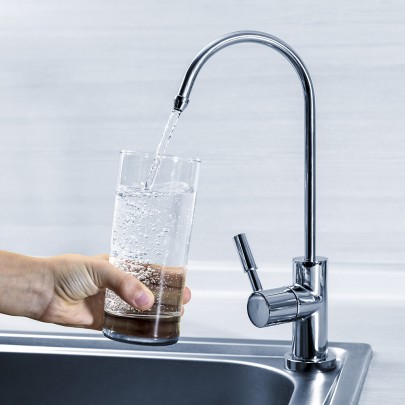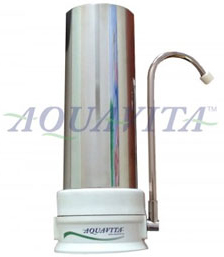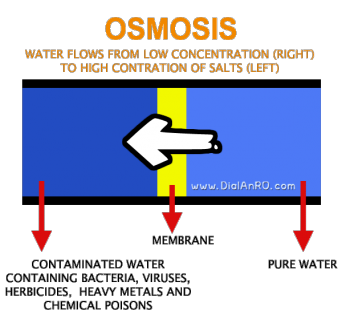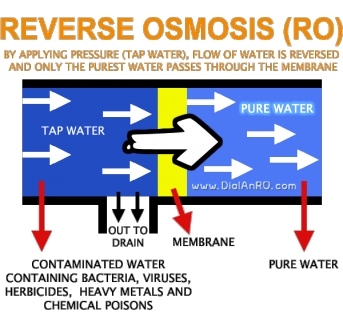Methods of Water Treatment
Filtration vs. Purification
Water purification technologies have advanced considerably in the past decade, leaving consumers with the task of selecting one that is right for them. In order to begin exploring AQUAVITA™’s water purification methods, though, the definitions of the terms ‘filtration’ and ‘purification’ must be understood.
The terms ‘filtration’ and ‘purification’ are often used interchangeably, while in fact, there is a significant difference.
Water filtration systems take one or two steps toward improving the quality of the water you drink, but they are just that – a first step. The carbon granules that water filtration devices utilize reduce, but usually don’t completely eliminate chemicals such as chlorine, VOCs (volatile organic compounds), and THMs (trihalomethanes). Some contain additional material that can kill bacteria or at least filter them out. The removal of chlorine improves the taste and smell of your water, but other impurities that are tasteless and odorless and could still be present.
Water purification, however, combines different stages of carbon filtration with other purification technologies including ion exchange and reverse osmosis, resulting in a total solution that can be applied anywhere in the world.
AQUAVITA™’s goal is to meet the needs of any and all potential clients. As a result, we provide a wide range of both water filtration systems and water purification systems:

Combo/Dual/Triple Water Filtration Systems
Our line of high quality water filtration systems come in single, dual, and triple stage units. These systems use the best sediment and granular activated carbon (GAC) filters available to assure high quality water output. Depending on the model, the products will remove sediments, chlorine, heavy metals, chemical contaminants and metal ions. Our water filtration systems will also improve the water’s taste, odor an appearance.
For our customers’ convenience, water filtration systems are available in both Countertop and Under Counter models:
Click here to view our selection of Countertop Drinking Water Systems.
Click here to view our selection of Under Counter Drinking Water Systems.

Our Stainless Steel Combo Countertop Drinking Water System
Reverse Osmosis Water Purification Systems
RO is the most recommended form of water purification for the majority of uses.
The USEPA has recognized membrane processes such as reverse osmosis as the “best available technology” for meeting the Safe Drinking Water Act (SDWA) regulations. As a result, reverse osmosis has become the water purification method of choice for drinking water in many households and businesses throughout the world. This comes as no surprise, as reverse osmosis is the best and most efficient method to purify polluted and undesirable water into pure and healthy water.
As a result of this worldwide appeal and technological superiority, reverse osmosis Water Purification Systems have become AQUAVITA™’s flagship products.
Reserve Osmosis technology encompasses the movement of pressurized water across a semi-permeable polymer membrane. The membrane is in the form of a sheet that is wrapped around a core. A mesh, which allows the cross flow of water, leaving its concentration sandwiched between each roll of the membrane. The semi-permeability characteristic of the membrane is attributed to a high concentration of pores with a diameter of 0.0001 microns. It also contains a natural negative charge that facilities the rejection of ions.
The use of the RO system needs an artificial pressure source to overcome the natural pressure that drives water, across a semi-permeable membrane, from high concentration to low concentration. With the aid of pump or city pressure, the water is continuously forced against the natural osmotic pressure gradient – from a low concentration (concentrate) to high concentration (permeate or product water). As water passes through the membrane, undissolved impurities are obstructed and left to accumulate along the membrane. Accumulation leading to complete blocking of the membranes is prevented as a result of the mesh located between each roll of membrane. The mesh assists in cross-flow movement of water carrying the concentrate (or reject) away from outer surface of the membrane to the drain.
The reverse osmosis process is capable of reducing dissolved in-organic minerals, metals, etc. found in the city supply, by 99%. It will also effectively remove un-dissolved particles. RO technology will prevent the passage of microorganisms that are larger than 0.0001 microns. Therefore, protozoa (e.g. Cryptosporidium), bacteria, viruses and pyrogens are rejected and prevented from contaminating the RO product water. RO can also be used for brackish water treatment and reducing the water hardness.
The chart below shows the contaminants that reverse osmosis technology can remove from drinking water.


It is important to note that the quality of the water that comes out of a reverse osmosis system is dependent on the quality of the filters and components. Just because a product has a label reading ‘reverse osmosis’ on it, does not automatically make its output water safe. Reverse Osmosis water purification systems must be approved by international associations such as The National Sanitation Foundation (NSF) and The Water Quality Association.
Here at AQUAVITA™, our products are fully certified by the aforementioned organizations. Our products are of incomparable quality, and are fully manufactured in the USA. This includes filters, housings, and all other components.
Alkaline Water Systems
Alkaline water has a naturally high pH level ranging from 8 to 9.5. The average diet of most people consists of foods that are highly acidic with a range between 3.3 to 5. However, what most people don’t know, is that this overload of acid in our diets has been linked to diseases such as diabetes, arteriosclerosis, high blood pressure, and other chronic conditions. By consuming alkaline water in place of tap water,you can help your body find the natural balance that it seeks.
When water passes through alkaline filters, it breaks up the clusters of water molecules into smaller clusters. This makes it easier for your body to absorb the water, allowing you to stay better hydrated than when consuming tap or bottled water.
There are naturally occurring molecules in our bodies known as oxygen free radicals, which are missing electrons. In order to fill that void, they take electrons from the body’s healthy cells. By drinking alkaline water – which is rich in antioxidants – you are introducing extra electrons to your body, keeping your cells from any damage caused by free radicals.
While there is no doubt in the fact that alkaline water helps your body maintain optimum health, tastes great, is completely natural, both hydrates and detoxes your body, promotes a neutral pH level in the body, and requires no extra effort on your part; it is also important to look at how a system alkalizes water. Unfortunately, the vast majority of alkaline water systems alkalize water by unnatural means, meaning that they use electricity to increase the pH to very high levels – so much so that it can even become addictive. In contrast, our systems use ONLY natural minerals and substances to raise the pH, and do not use any form of power or electricity. Furthermore, many alkaline water systems on the market do not even purify the water while costing significantly more than the products we provide. Is it not counter-intuitive to alkalize water for BETTER health, yet not purify contaminants and end up with WORSE health? We sure thinks so. With AQUAVITA™, experience water that is both purified using state-of the-art reverse osmosis technology, and alkalized using the latest standards for producing natural alkaline water.
Click here to view our Alkaline Water System.


